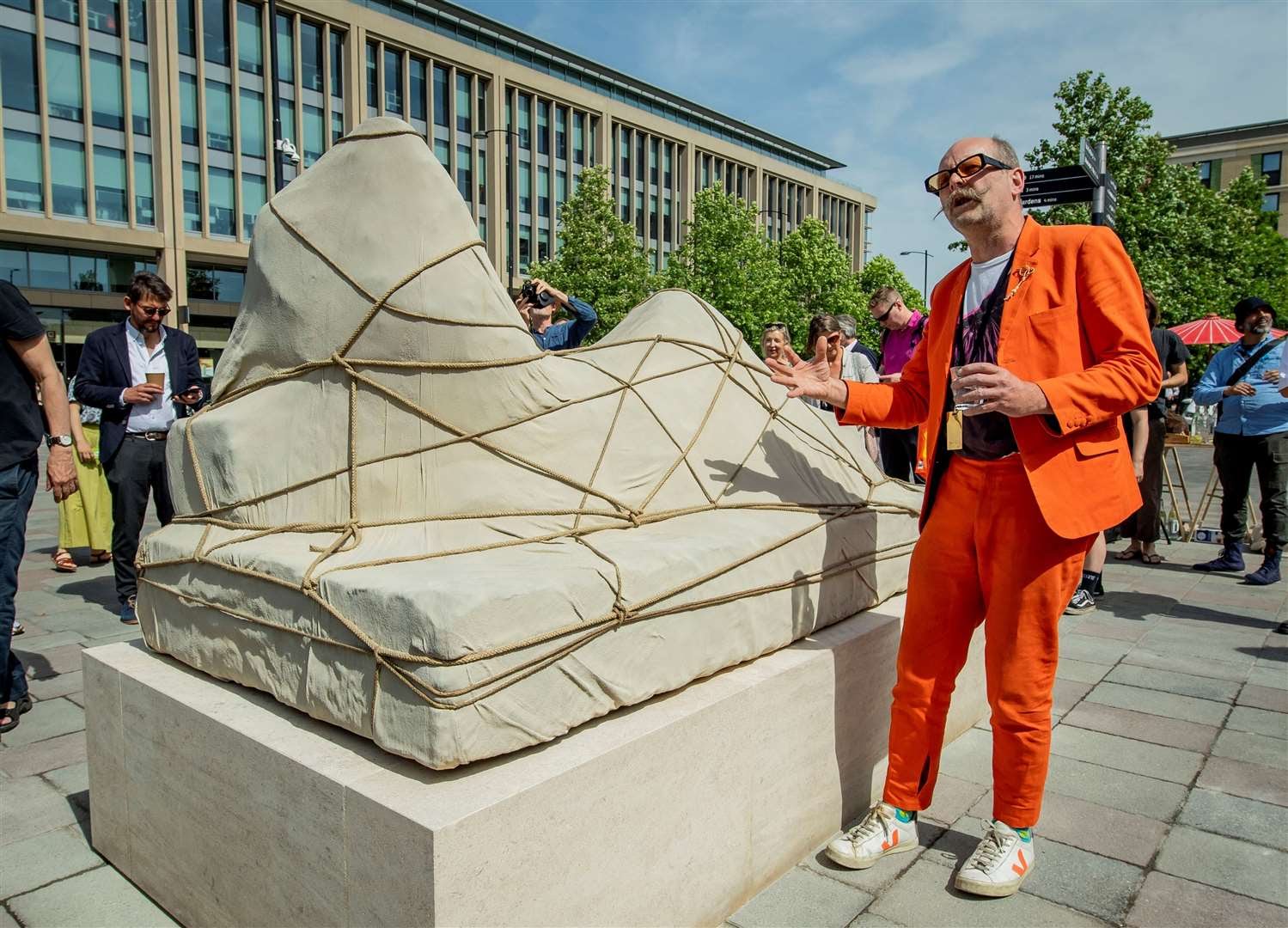

Green city councillor Jean Glasberg called the piece “totally inappropriate,” arguing that it portrays an unsettling image for city visitors—namely “a woman tied in a sack.” Deborah Curtis, Turk’s wife, countered that the sculpture stimulates curiosity and encourages positive dialogue. The artwork represents Ariadne as a statue in transit, enveloped in a protective dust sheet. Concerns about the piece were initially raised by Green councillor Naomi Bennett during a Cambridge City Council meeting on October 10, as reported by the Cambridge Independent. Glasberg, echoing earlier criticisms, suggested that the sculpture should be removed.
In an interview with BBC News, Glasberg expressed her thoughts, reflecting on the plight of women in various countries who are forcibly veiled and silenced, as well as the widespread violence against women. “It seems wrong to me this sculpture should be here. Is that what we want people to see when they arrive in Cambridge?” she questioned.
Glasberg contended that the artwork misrepresents Ariadne’s historical depiction. “Ariadne wasn’t a trapped, passive victim; she was clever, brave, and resourceful,” she stated, noting that Ariadne assisted Theseus in navigating the labyrinth and defeating the Minotaur. Although Glasberg emphasized that she respected Turk’s artistic freedom, she questioned the ethical implications of this particular piece.
To provide context, a QR code was placed near the sculpture, directing viewers to a website explaining the artwork’s intent.
Deborah Curtis, director of a creative arts charity, expressed that she and her husband are open to feedback and are actively engaging with the sculpture’s critics. “I think there’s an interesting question as to whether the sculpture stays or not,” she said to the BBC. Curtis remarked that contemporary perceptions of public art differ greatly from historical interpretations.
“Though Gavin’s intention might be getting somewhat lost in translation, that’s perfectly okay,” she said. “This is a constructive debate of public interest, allowing us to view and interpret art differently through conversation, which can only be positive.” Curtis emphasized that Turk did not aim to support misogynistic views, underscoring the critical distinction between a sculpture and a real person. She concluded by suggesting that the piece represents a “journey of transportation,” or perhaps a transformation, akin to a cocoon becoming a butterfly.
The potential revival of the EastMed pipeline under Donald Trump’s leadership signals a renewed push…
Greece is considering the Israeli BARAK air defense system to replace its aging S-300s, favoring…
Donald Trump has announced sweeping tariffs ranging from 10% to 49% on U.S. trade partners…
A powerful storm struck Serifos on Wednesday, flooding streets and overwhelming residents as part of…
Saints and Feasts: 5th Thursday of Lent: This most compunctionate Canon- which is truly great…
President Donald Trump unveiled a new policy to impose reciprocal tariffs on countries worldwide, calling…